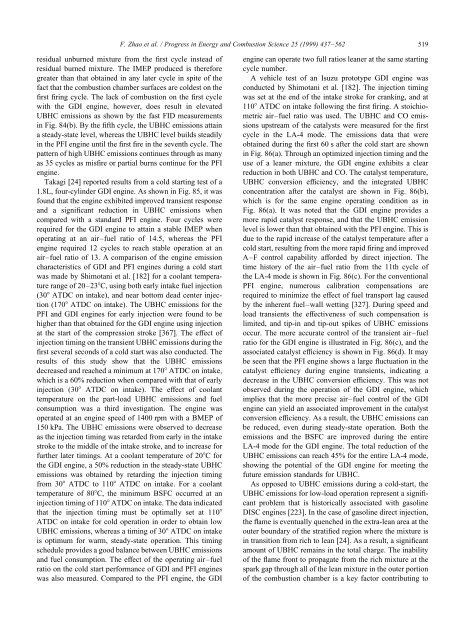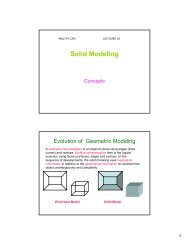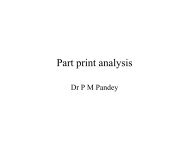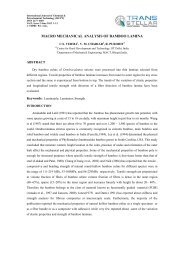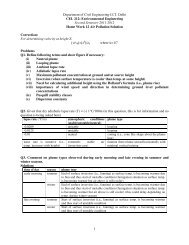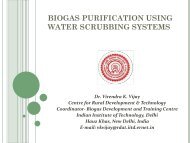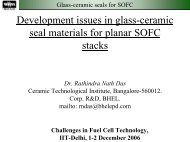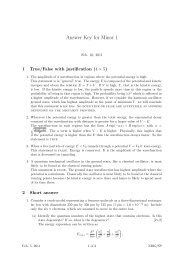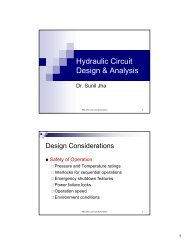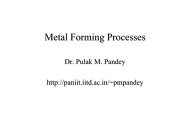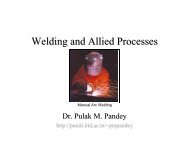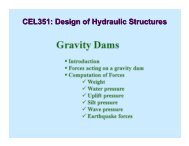Automotive spark-ignited direct-injection gasoline engines
Automotive spark-ignited direct-injection gasoline engines
Automotive spark-ignited direct-injection gasoline engines
You also want an ePaper? Increase the reach of your titles
YUMPU automatically turns print PDFs into web optimized ePapers that Google loves.
F. Zhao et al. / Progress in Energy and Combustion Science 25 (1999) 437–562 519<br />
residual unburned mixture from the first cycle instead of<br />
residual burned mixture. The IMEP produced is therefore<br />
greater than that obtained in any later cycle in spite of the<br />
fact that the combustion chamber surfaces are coldest on the<br />
first firing cycle. The lack of combustion on the first cycle<br />
with the GDI engine, however, does result in elevated<br />
UBHC emissions as shown by the fast FID measurements<br />
in Fig. 84(b). By the fifth cycle, the UBHC emissions attain<br />
a steady-state level, whereas the UBHC level builds steadily<br />
in the PFI engine until the first fire in the seventh cycle. The<br />
pattern of high UBHC emissions continues through as many<br />
as 35 cycles as misfire or partial burns continue for the PFI<br />
engine.<br />
Takagi [24] reported results from a cold starting test of a<br />
1.8L, four-cylinder GDI engine. As shown in Fig. 85, it was<br />
found that the engine exhibited improved transient response<br />
and a significant reduction in UBHC emissions when<br />
compared with a standard PFI engine. Four cycles were<br />
required for the GDI engine to attain a stable IMEP when<br />
operating at an air–fuel ratio of 14.5, whereas the PFI<br />
engine required 12 cycles to reach stable operation at an<br />
air–fuel ratio of 13. A comparison of the engine emission<br />
characteristics of GDI and PFI <strong>engines</strong> during a cold start<br />
was made by Shimotani et al. [182] for a coolant temperature<br />
range of 20–23C, using both early intake fuel <strong>injection</strong><br />
(30 ATDC on intake), and near bottom dead center <strong>injection</strong><br />
(170 ATDC on intake). The UBHC emissions for the<br />
PFI and GDI <strong>engines</strong> for early <strong>injection</strong> were found to be<br />
higher than that obtained for the GDI engine using <strong>injection</strong><br />
at the start of the compression stroke [367]. The effect of<br />
<strong>injection</strong> timing on the transient UBHC emissions during the<br />
first several seconds of a cold start was also conducted. The<br />
results of this study show that the UBHC emissions<br />
decreased and reached a minimum at 170 ATDC on intake,<br />
which is a 60% reduction when compared with that of early<br />
<strong>injection</strong> (30 ATDC on intake). The effect of coolant<br />
temperature on the part-load UBHC emissions and fuel<br />
consumption was a third investigation. The engine was<br />
operated at an engine speed of 1400 rpm with a BMEP of<br />
150 kPa. The UBHC emissions were observed to decrease<br />
as the <strong>injection</strong> timing was retarded from early in the intake<br />
stroke to the middle of the intake stroke, and to increase for<br />
further later timings. At a coolant temperature of 20C for<br />
the GDI engine, a 50% reduction in the steady-state UBHC<br />
emissions was obtained by retarding the <strong>injection</strong> timing<br />
from 30 ATDC to 110 ATDC on intake. For a coolant<br />
temperature of 80C, the minimum BSFC occurred at an<br />
<strong>injection</strong> timing of 110 ATDC on intake. The data indicated<br />
that the <strong>injection</strong> timing must be optimally set at 110<br />
ATDC on intake for cold operation in order to obtain low<br />
UBHC emissions, whereas a timing of 30 ATDC on intake<br />
is optimum for warm, steady-state operation. This timing<br />
schedule provides a good balance between UBHC emissions<br />
and fuel consumption. The effect of the operating air–fuel<br />
ratio on the cold start performance of GDI and PFI <strong>engines</strong><br />
was also measured. Compared to the PFI engine, the GDI<br />
engine can operate two full ratios leaner at the same starting<br />
cycle number.<br />
A vehicle test of an Isuzu prototype GDI engine was<br />
conducted by Shimotani et al. [182]. The <strong>injection</strong> timing<br />
was set at the end of the intake stroke for cranking, and at<br />
110 ATDC on intake following the first firing. A stoichiometric<br />
air–fuel ratio was used. The UBHC and CO emissions<br />
upstream of the catalysts were measured for the first<br />
cycle in the LA-4 mode. The emissions data that were<br />
obtained during the first 60 s after the cold start are shown<br />
in Fig. 86(a). Through an optimized <strong>injection</strong> timing and the<br />
use of a leaner mixture, the GDI engine exhibits a clear<br />
reduction in both UBHC and CO. The catalyst temperature,<br />
UBHC conversion efficiency, and the integrated UBHC<br />
concentration after the catalyst are shown in Fig. 86(b),<br />
which is for the same engine operating condition as in<br />
Fig. 86(a). It was noted that the GDI engine provides a<br />
more rapid catalyst response, and that the UBHC emission<br />
level is lower than that obtained with the PFI engine. This is<br />
due to the rapid increase of the catalyst temperature after a<br />
cold start, resulting from the more rapid firing and improved<br />
A–F control capability afforded by <strong>direct</strong> <strong>injection</strong>. The<br />
time history of the air–fuel ratio from the 11th cycle of<br />
the LA-4 mode is shown in Fig. 86(c). For the conventional<br />
PFI engine, numerous calibration compensations are<br />
required to minimize the effect of fuel transport lag caused<br />
by the inherent fuel–wall wetting [327]. During speed and<br />
load transients the effectiveness of such compensation is<br />
limited, and tip-in and tip-out spikes of UBHC emissions<br />
occur. The more accurate control of the transient air–fuel<br />
ratio for the GDI engine is illustrated in Fig. 86(c), and the<br />
associated catalyst efficiency is shown in Fig. 86(d). It may<br />
be seen that the PFI engine shows a large fluctuation in the<br />
catalyst efficiency during engine transients, indicating a<br />
decrease in the UBHC conversion efficiency. This was not<br />
observed during the operation of the GDI engine, which<br />
implies that the more precise air–fuel control of the GDI<br />
engine can yield an associated improvement in the catalyst<br />
conversion efficiency. As a result, the UBHC emissions can<br />
be reduced, even during steady-state operation. Both the<br />
emissions and the BSFC are improved during the entire<br />
LA-4 mode for the GDI engine. The total reduction of the<br />
UBHC emissions can reach 45% for the entire LA-4 mode,<br />
showing the potential of the GDI engine for meeting the<br />
future emission standards for UBHC.<br />
As opposed to UBHC emissions during a cold-start, the<br />
UBHC emissions for low-load operation represent a significant<br />
problem that is historically associated with <strong>gasoline</strong><br />
DISC <strong>engines</strong> [223]. In the case of <strong>gasoline</strong> <strong>direct</strong> <strong>injection</strong>,<br />
the flame is eventually quenched in the extra-lean area at the<br />
outer boundary of the stratified region where the mixture is<br />
in transition from rich to lean [24]. As a result, a significant<br />
amount of UBHC remains in the total charge. The inability<br />
of the flame front to propagate from the rich mixture at the<br />
<strong>spark</strong> gap through all of the lean mixture in the outer portion<br />
of the combustion chamber is a key factor contributing to


